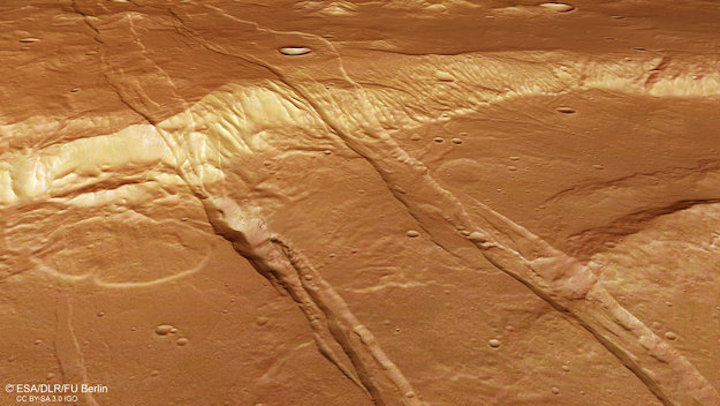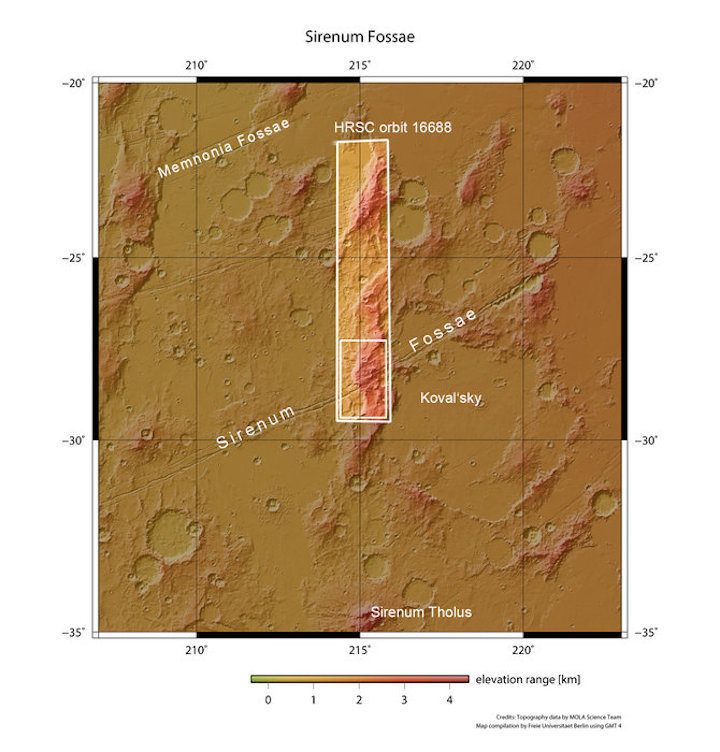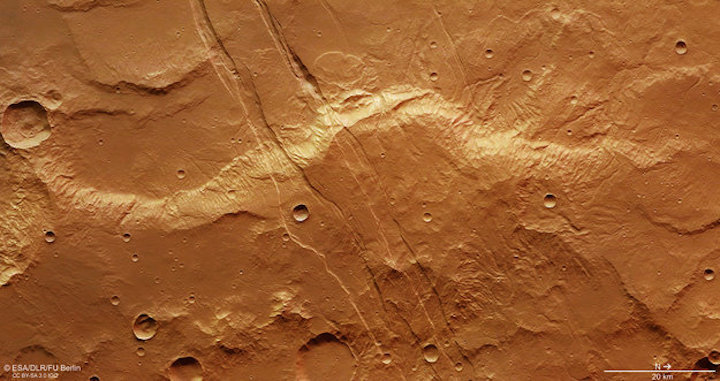.

Sirenum Fossae perspective view
-
These striking features on Mars were caused by the planet’s crust stretching apart in response to ancient volcanic activity.
The fractures in the Sirenum Fossae region in the southern hemisphere were imaged by ESA’s Mars Express in March. They extend for thousands of kilometres in length, far beyond the boundaries of this image.
The fractures divide the crust into blocks: the movement along a pair of faults causes the centre section to drop down into ‘graben’ several kilometres wide and a few hundred metres deep. Elevated blocks of crust remain between the graben when there is a parallel series of fault, as seen in this scene.
The Sirenum Fossae are part of a larger radial fracture pattern around the Arsia Mons volcano in the Tharsis region, which is situated some 1800 km to the northeast.
Tharsis is the largest volcanic province on Mars, its far-reaching fracture system testament to the powerful influence this impressive volcanic province had on the planet.

Sirenum Fossae in context
-

Sirenum Fossae fractures
-
Indeed, the Sirenum Fossae fracture system seen here is thought to be associated with tectonic stresses arising from ancient volcanic activity in the Tharsis region. For example, the graben could either be caused by the planet’s crust stretching apart as a magma chamber bulges the crust above it, or alternatively as the crust collapsed along lines of weakness as the magma chamber emptied.
It is also possible that each graben was associated with an ancient volcanic dike: a steep corridor within the rock along which magma from the interior of Mars once propagated upwards, causing cracking along the surface.
In this case the graben could represent a giant ‘dike swarm’ extending from the volcanic centre. Dike swarms are also seen on Earth, as in Iceland where they are observed with surface fractures and graben sets in the Krafla fissure swarm.

As with any geological feature that cuts into the surface of the planet, the graben systems make for a good window into the subsurface. They also provide steep surfaces for active processes occurring in more recent times.
For example, NASA’s Mars Reconnaissance Orbiter identified gullies on some of the steep slopes in Sirenum Fossae, along troughs and in the rims of impact craters. What material carves out the small channels is a topic of active research: they were initially thought to be related to flowing water, but recent proposals suggest that seasonal frozen carbon dioxide – dry ice – flowing downslope may be responsible.

Sirenum Fossae in 3D
Quelle: ESA
